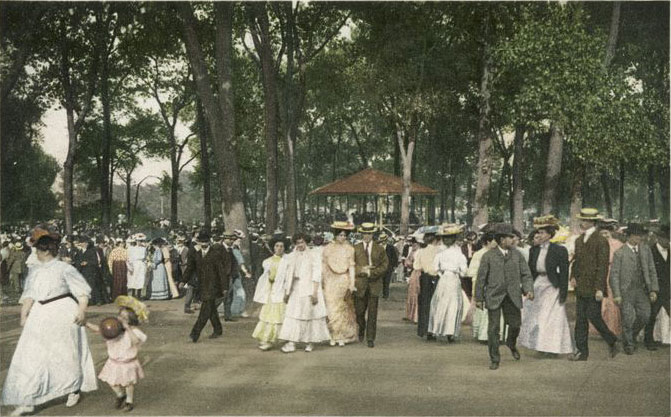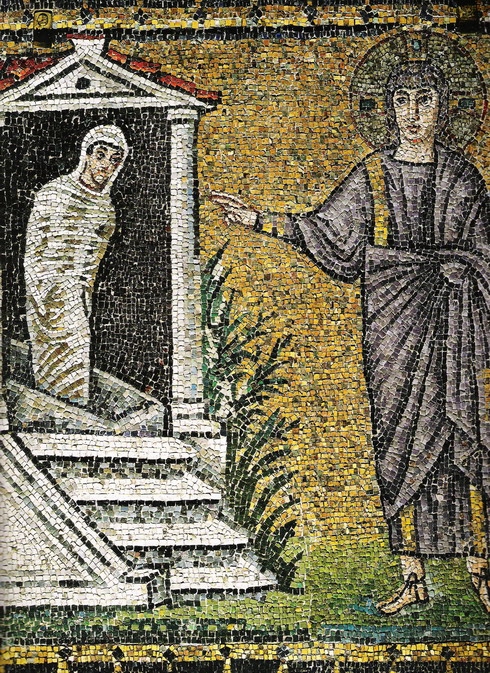|
Sevastopol Park
The Sevastopol Park () is a memorial park in the city of Dnipro, Ukraine. In commemoration of the 100th anniversary of the Siege of Sevastopol, the park was established in 1955. On the park's main lane there was a monument honoring the soldiers of the siege that was partly destructed on the order of the Dnipro city council on 7 June 2024 to comply with derussification laws. The memorial was built by architect Petrov and given to the city, constructed from materials collected from Sevastopol itself. History During the Siege of Sevastopol Fromm 1854 to 1855, the whole of what is now Dnipro was the a strategically significant location on the military operations map during the Crimean War. The location functioned as the southern frontier area leading to Crimea. This location also housed army units, command centers, and military hospitals. This was the closest safe area for all the injured, and is significant to remember that Katerynoslav (as the city of Dnipro was called at the tim ... [...More Info...] [...Related Items...] OR: [Wikipedia] [Google] [Baidu] |
Urban Park
An urban park or metropolitan park, also known as a city park, municipal park (North America), public park, public open space, or municipal gardens (United Kingdom, UK), is a park or botanical garden in cities, densely populated suburbia and other municipal corporation, incorporated places that offers open space reserve, green space and places for recreation to residents and visitors. Urban parks are generally Landscape architecture, landscaped by design, instead of lands left in their natural state. The design, operation and maintenance, repair and operations, maintenance is usually done by government agencies, typically on the local government, local level, but may occasionally be contracted out to a park conservancy, "friends of" group, or private sector company. Depending on size, budget, and land features, which varies considerably among individual parks, common features include playgrounds, gardens, hiking, running, fitness trails or paths, bridle paths, sports fields and c ... [...More Info...] [...Related Items...] OR: [Wikipedia] [Google] [Baidu] |
Lazarus Of Bethany
Lazarus of Bethany is a figure of the New Testament whose life is restored by Jesus four days after his death, as told in the Gospel of John. The resurrection is considered one of the miracles of Jesus. In the Eastern Orthodox Church, Lazarus is Veneration, venerated as Righteous Lazarus, the Four-Days Dead. The Eastern Orthodox and Catholic Church, Catholic traditions offer varying accounts of the later events of his life. In the context of the Book of Signs, seven signs in the Gospel of John, the raising of Lazarus at Bethany – today the town of Al-Eizariya in the West Bank, which translates to "the place of Lazarus" – is the climactic narrative: exemplifying the power of Jesus "over the last and most irresistible enemy of humanity: death. For this reason, it is given a prominent place in the gospel." The name ''Lazarus'' is frequently used in science and popular culture in reference to apparent restoration to life; for example, the scientific term Lazarus taxon denotes o ... [...More Info...] [...Related Items...] OR: [Wikipedia] [Google] [Baidu] |
Protopope
A protopope, or protopresbyter, is a priest of higher rank in the Eastern Orthodox and the Byzantine Catholic Churches, generally corresponding to Western Christianity's archpriest or the Latin Church's dean. History The rights and duties of these dignitaries have varied to some extent at different times and in different local churches. Roughly, the titles archpriest (in Greek ''archipresbyteros''), protoiereus ( ''protoiereus'', ''protopresbyteros''), protopope may be taken as meaning the same thing, though they have occasionally been distinguished. The general idea is that the archpriest has the highest rank in his order; he comes immediately after the bishop. In the fifth century he appears as head of the college of priests, as the bishop's delegate for certain duties of visitation and canonical judgment, as his representative in case of absence or death (''sede vacante''). He therefore combined the offices of the Roman Catholic dean of the chapter, vicar-general and v ... [...More Info...] [...Related Items...] OR: [Wikipedia] [Google] [Baidu] |
Dnieper Flotilla
The Dnieper Flotilla (, ) is the name given to the various naval flotillas on the Dnieper River. These were particularly active in four conflicts: the Russo-Turkish wars of Russo–Turkish War (1735–1739), 1735–39 and Russo-Turkish War (1787–92), 1787–92, the Russian Civil War, and Eastern Front (World War II), World War II (called, in Russia, the Great Patriotic War (term), Great Patriotic War). The Dnieper Flotilla in the Russian Empire Russo-Turkish War (1735–39) Small naval vessels were built in Bryansk on the Desna River (a tributary of the Dnieper) from 1724. At the start of the Russo-Turkish war in 1735, the Dnieper Army of Field Marshal B. K. Minich requested naval assistance in capturing the Turkish fortress of Ochakiv on the Black Sea. At the instigation of Vice-Chancellor Andrey Osterman, Count Osterman, the Governing Senate issued a decree on January 4, 1737 for the building at Bryansk of a flotilla for operations on the Dnieper River. At least ten British of ... [...More Info...] [...Related Items...] OR: [Wikipedia] [Google] [Baidu] |
Cossacks
The Cossacks are a predominantly East Slavic languages, East Slavic Eastern Christian people originating in the Pontic–Caspian steppe of eastern Ukraine and southern Russia. Cossacks played an important role in defending the southern borders of Ukraine and Russia, Cossack raids, countering the Crimean-Nogai slave raids in Eastern Europe, Crimean-Nogai raids, alongside economically developing steppes, steppe regions north of the Black Sea and around the Azov Sea. Historically, they were a semi-nomadic and semi-militarized people, who, while under the nominal suzerainty of various Eastern European states at the time, were allowed a great degree of self-governance in exchange for military service. Although numerous linguistic and religious groups came together to form the Cossacks, most of them coalesced and became East Slavic languages, East Slavic–speaking Eastern Orthodox Church, Orthodox Christians. The rulers of the Polish–Lithuanian Commonwealth and Russian Empire en ... [...More Info...] [...Related Items...] OR: [Wikipedia] [Google] [Baidu] |
Victory Day Over Nazism In World War II
Victory Day over Nazism in World War II () was a national holiday and a non-working day in Ukraine from 2015 to 2023. The holiday was first celebrated on 9 May 2015 and followed the Day of Remembrance and Reconciliation on 8 May (which paid tribute to the victims of World War II and was also first celebrated in 2015). The holiday replaced Victory Day, which is celebrated in other post-Soviet states. On May 8, 2023, Ukrainian President Volodymyr Zelenskyy submitted to the Verkhovna Rada (Ukraine's national parliament) a bill establishing May 8, the Day of Remembrance and Victory over Nazism in World War II 1939 – 1945. On May 29, 2023, parliament made the Day of Remembrance and Victory over Nazism in World War II 1939 – 1945 on May 8 as a public holiday, canceling the Victory Day over Nazism in World War II on May 9. History On April 9, 2015, the Ukrainian parliament approved a set of decommunization laws which included the annulment of the Soviet law commonly cite ... [...More Info...] [...Related Items...] OR: [Wikipedia] [Google] [Baidu] |
Scouting And Guiding In Ukraine
Scouting in Ukraine received World Organization of the Scout Movement (WOSM) recognition in July 2008. The Eurasian Region headquarters is located on Ukrainian territory. 2008 WOSM recognition The World Scout Bureau received an application for membership of the World Organization from the National Organization of Scouts of Ukraine (NOSU). In accordance with the requirements of the Constitution of WOSM, the World Scout Committee considered this application at its meeting on 29 February-2 March 2008, and recommended that it be accepted. Under the terms of Article VI.2 of the WOSM Constitution, “if within three months the recommendation is unopposed or opposed by less than five percent of the Member Organizations”, NOSU was declared a Member, as the National Scout Organization of Ukraine, of the World Organization of the Scout Movement as from 1 July 2008. Ukrainian Scout organizations * National Organization of Scouts of Ukraine, member of the World Organization of the Scout ... [...More Info...] [...Related Items...] OR: [Wikipedia] [Google] [Baidu] |
Alexander Pol
Alexander Nikolayevich Pol (20 August 1832 – 26 July 1890) was a Russian archaeologist, geologist, ethnographer and businessman of Baltic German descent. He is most well-known for discovering Kryvbas, a major iron ore region of Eastern Europe. Biography Alexander Pol was born into a noble family of Baltic GermansDonik, O. Alexander Pol'. Encyclopedia of History of Ukraine. in Maloaleksandrovka, Verkhnedneprovsky Uyezd, Yekaterinoslav Governorate, Russian Empire (present-day Ukraine). On his mother's line he was a far relative of Polubotok and Poletika families. Pol attended local schools before studying at the Imperial University of Dorpat, where he graduated. He studied geology and archeology. Pol studied the iron ore of Krivoy Rog (present-day Kryvyi Rih, Ukraine) for 15 years and proved its industrial importance. He is credited with discovering the Kryvbas, a major iron ore region, and is most well-known for this. While studying ore deposits, he also made archeological fi ... [...More Info...] [...Related Items...] OR: [Wikipedia] [Google] [Baidu] |
Declaration Of Independence Of Ukraine
The Act of Declaration of Independence of Ukraine was adopted by the Supreme Soviet of the Ukrainian Soviet Socialist Republic, Supreme Soviet of the Ukrainian SSR (''Verkhovna Rada'') on 24 August 1991.A History of Ukraine: The Land and Its Peoples by Paul Robert Magocsi, University of Toronto Press, 2010, (page 722/723) The Act reestablished Ukraine's state independence from the Soviet Union. The declaration was affirmed by a majority of Ukrainians in all regions of Ukraine by an 1991 Ukrainian independence referendum, independence referendum on 1 December, followed by international recognition starting on the following day. Ukrainian independence led to the dissolution of the Soviet Union by 26 December 1991. ...
|




